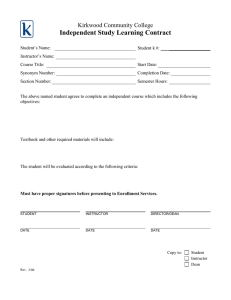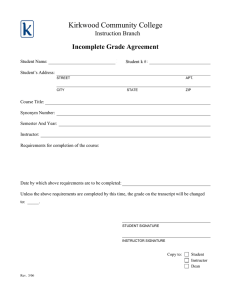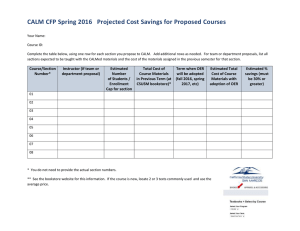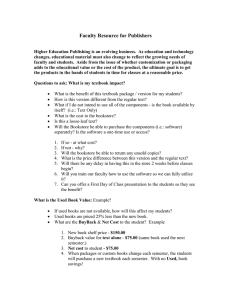Traditional Textbooks vs. OER:
advertisement
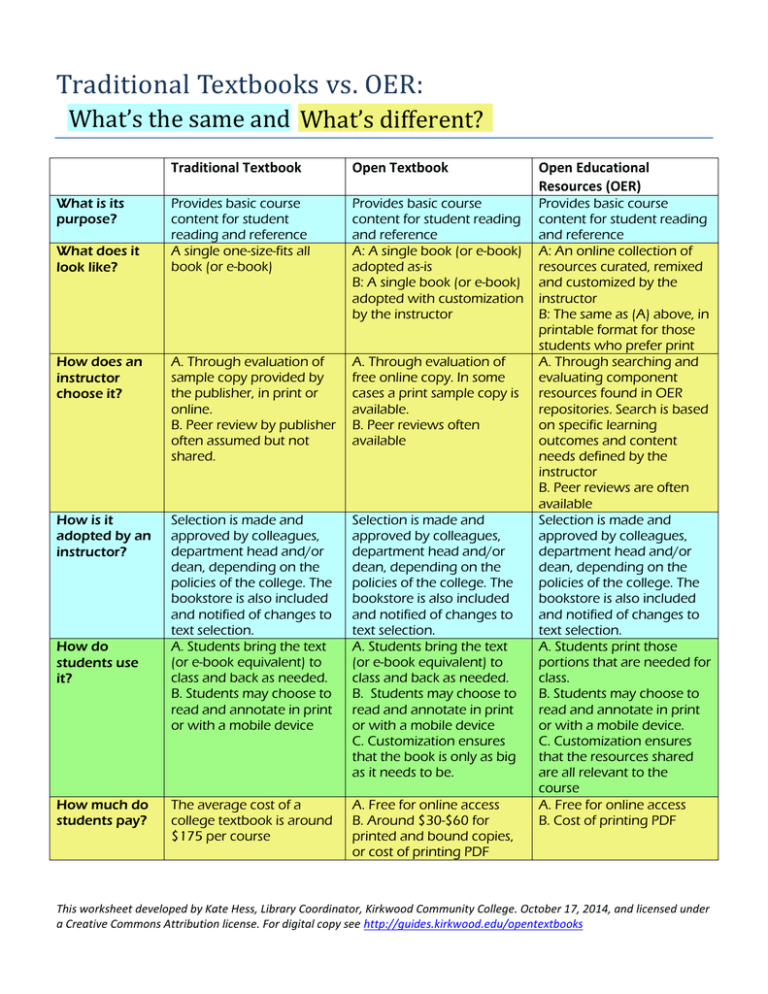
Traditional Textbooks vs. OER: What’s the same and What’s different? Traditional Textbook Open Textbook Open Educational Resources (OER) Provides basic course content for student reading and reference A single one-size-fits all book (or e-book) Provides basic course content for student reading and reference A: A single book (or e-book) adopted as-is B: A single book (or e-book) adopted with customization by the instructor How does an instructor choose it? A. Through evaluation of sample copy provided by the publisher, in print or online. B. Peer review by publisher often assumed but not shared. A. Through evaluation of free online copy. In some cases a print sample copy is available. B. Peer reviews often available How is it adopted by an instructor? Selection is made and approved by colleagues, department head and/or dean, depending on the policies of the college. The bookstore is also included and notified of changes to text selection. A. Students bring the text (or e-book equivalent) to class and back as needed. B. Students may choose to read and annotate in print or with a mobile device Selection is made and approved by colleagues, department head and/or dean, depending on the policies of the college. The bookstore is also included and notified of changes to text selection. A. Students bring the text (or e-book equivalent) to class and back as needed. B. Students may choose to read and annotate in print or with a mobile device C. Customization ensures that the book is only as big as it needs to be. The average cost of a college textbook is around $175 per course A. Free for online access B. Around $30-$60 for printed and bound copies, or cost of printing PDF Provides basic course content for student reading and reference A: An online collection of resources curated, remixed and customized by the instructor B: The same as (A) above, in printable format for those students who prefer print A. Through searching and evaluating component resources found in OER repositories. Search is based on specific learning outcomes and content needs defined by the instructor B. Peer reviews are often available Selection is made and approved by colleagues, department head and/or dean, depending on the policies of the college. The bookstore is also included and notified of changes to text selection. A. Students print those portions that are needed for class. B. Students may choose to read and annotate in print or with a mobile device. C. Customization ensures that the resources shared are all relevant to the course A. Free for online access B. Cost of printing PDF What is its purpose? What does it look like? How do students use it? How much do students pay? This worksheet developed by Kate Hess, Library Coordinator, Kirkwood Community College. October 17, 2014, and licensed under a Creative Commons Attribution license. For digital copy see http://guides.kirkwood.edu/opentextbooks OER Finding and Adopting Guide for Instructors 1. Define your need: a. Keywords for topic or learning outcomes (list to the right) b. Format preference 2. Search: a. Try many different sites and many different keywords and strategies b. Keep track of sites you’ve searches and keywords you’ve used in a Word or Google Doc 3. Identify & Evaluate: a. This stage is perhaps the most different from the process for selecting a traditional textbook. Use the criteria listed to the right in your selection process. 4. Adoption: a. What stakeholders in your college community need to be consulted or informed of your choice? 5. Use: a. How will students access this resource? For repository lists see: http://oerconsortium.org http://guides.kirkwood.edu/opentextbooks Quality □ Peer review available □ Reputation of author and/or institution □ Pedagogy Appropriateness □ Accuracy of content □ Alignment with course objective or learning outcome □ Appropriate reading level Technical □ Technical quality (clear visuals, high production value) □ Clear licensing declaration (Creative Commons, Public Domain, etc.) Possible stakeholders: □ Department head o Articulation agreements with other schools? □ Dean □ Bookstore □ Director of college LMS (technical considerations in loading or students’ ability to accessing content) □ Learning Services or ADA Officer: will the content you’ve selected be accessible by those with vision, hearing or other disability? □ Does your bookstore provide a printing service for bound or printed & 3-hole punch packets? □ Will you post materials to your own site (LMS or other) □ Will students have option of ordering a printed book or purchasing directly from your campus bookstore? This worksheet developed by Kate Hess, Library Coordinator, Kirkwood Community College. October 17, 2014, and licensed under a Creative Commons Attribution license. For digital copy see http://guides.kirkwood.edu/opentextbooks
